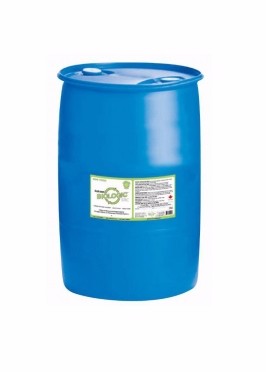What are the advantages of using microbial deodorants
What are the advantages of using microbial deodorants?
In recent years, the harm of odor pollution to human health cannot be ignored, and the attention of various countries to the environmental pollution caused by odor has led to increasingly active research on odor treatment. Although the history of microbial deodorization is still short and some operations are still in the experimental stage, due to its advantages and advantages that traditional methods cannot compare, its potential for development and future use are appropriately broad.
Microbial deodorants are produced using modern biological techniques, utilizing various beneficial microorganisms with different properties (such as lactic acid bacteria, yeast, photosynthetic bacteria, etc.) to interact with each other and form colonies. The microorganisms in these microorganisms coexist through mutually beneficial relationships, synergistically exerting their effects. Microbial beneficial bacteria for odor removal are based on the principles of microecological engineering. All life systems have microbial ecosystems and can be managed and improved through continuous probiotic investment. These beneficial microorganisms feed on foul smelling substances such as ammonia nitrogen, hydrogen sulfide, and mercaptan, converting them into odorless substances and quickly reducing the odor.

So, what are the advantages of using microbial deodorants?
(1) . Because microbial deodorization skills utilize the adsorption, absorption, and degradation effects of special microorganisms that can transform or degrade odorous substances to purify odorous gases and turn them into odorless ones. It does not contain chemicals or genetically modified product ingredients, and will not form secondary pollution, representing the future direction of the biological industry.
(2) High processing efficiency. The use of microbial deodorization skills greatly enhances its effectiveness in treating pollution. Compared with general chemical and biological methods, microbial deodorization skills have a degradation rate of organic matter that is multiple times higher than traditional methods. The application of microbial deodorants to pollutants can quickly remove odors, purify water quality, and reduce COD, ammonia, nitrogen, and other targets.
(3) Wider habituation. Microbial deodorization skills, especially mixed microbial deodorants, reduce the requirements for microbial survival conditions, enhance habits, reduce filtration, and adapt to various temperature and pH scales, which can also effectively play a role in low oxygen environments.
(4) Low management costs. Microbial deodorization technology products have the characteristic of treating both symptoms and root causes, without the need for land acquisition and factory construction or the purchase of large equipment. The comprehensive management cost and dynamic investment cost are low, and the management effect is significant.
(5) Strong targeting. Microbial deodorization skills can be widely applied to different categories, purposes, and polluted environments, and can be used in places with odors such as garbage dumps, septic tanks, breeding farms, sewage treatment plants, food processing plants, etc.
(6) Transforming harm into benefits. I used to think that pollutants could not be recycled. The sludge from urban sewage treatment plants was deodorized by microorganisms and made into fertilizer, such as ammonia and sulfation to synthesize ammonium sulfate fertilizer, in which various elements can be absorbed by plants; Improved the utilization rate of organic carbon in sludge; Moreover, most deodorizing microorganisms are beneficial microbial communities in the soil.
(7) Comparison between microbial deodorants and traditional chemical products. Each chemical product is a highly targeted product, and it will fail when encountering other messy chemical matrices; After using chemical products, there are always chemical residues in the water, which may bring side effects or new pollution; The use of chemical products can mask odors, but cannot alter their generation or hinder their emission. Microbial deodorization skills utilize natural differentiation and active biochemical effects during the differentiation process, without the aforementioned issues occurring.
(8) Compared to traditional biological purification agents, microbial deodorants are more effective. Microbial deodorization skills can greatly eliminate odors, promote the agile metabolism of liquid pollutants and organic substances, reduce the volume of solid substances, and quickly purify contaminated substances.
Microbial deodorization skills utilize natural differentiation and defecation after differentiation, therefore, their potential for development and future use are appropriately broad.
The article originates from a deodorant manufacturer http://www.scneng.com.hk/
-
06-11
"Environmental Doctor" Du Siyuan: Environmental Protection is a Lifestyle Attitude
There is a Hong Kong compatriot in Jiangmen who often frequents various farms and plantations, walks in mechanical factories, and is seen by others as the nemesis of environmental problems. He conside
-
03-16
Deodorant manufacturer: Deodorants reduce soil pollution
Waste is a chaotic mixture of various components. The accumulation of debris on the surface of soil can cause some chemical reactions, releasing harmful gases, which can lead to soil pollution and eve
-
12-01
Deodorant Manufacturers: Differences between Microbial Deodorants and Traditional Deodorants
The waste that is not needed in our daily life and work is called waste. Due to the large amount of waste discharged and the complex categories, there are great difficulties in reducing waste and deod
-
11-08
Application of Deodorant Manufacturers in Domestic Waste Treatment
Garbage is the waste generated in everyone's daily life and work. Due to its large discharge volume and complex and diverse composition, it poses great difficulties in reducing and deodorizing wa
